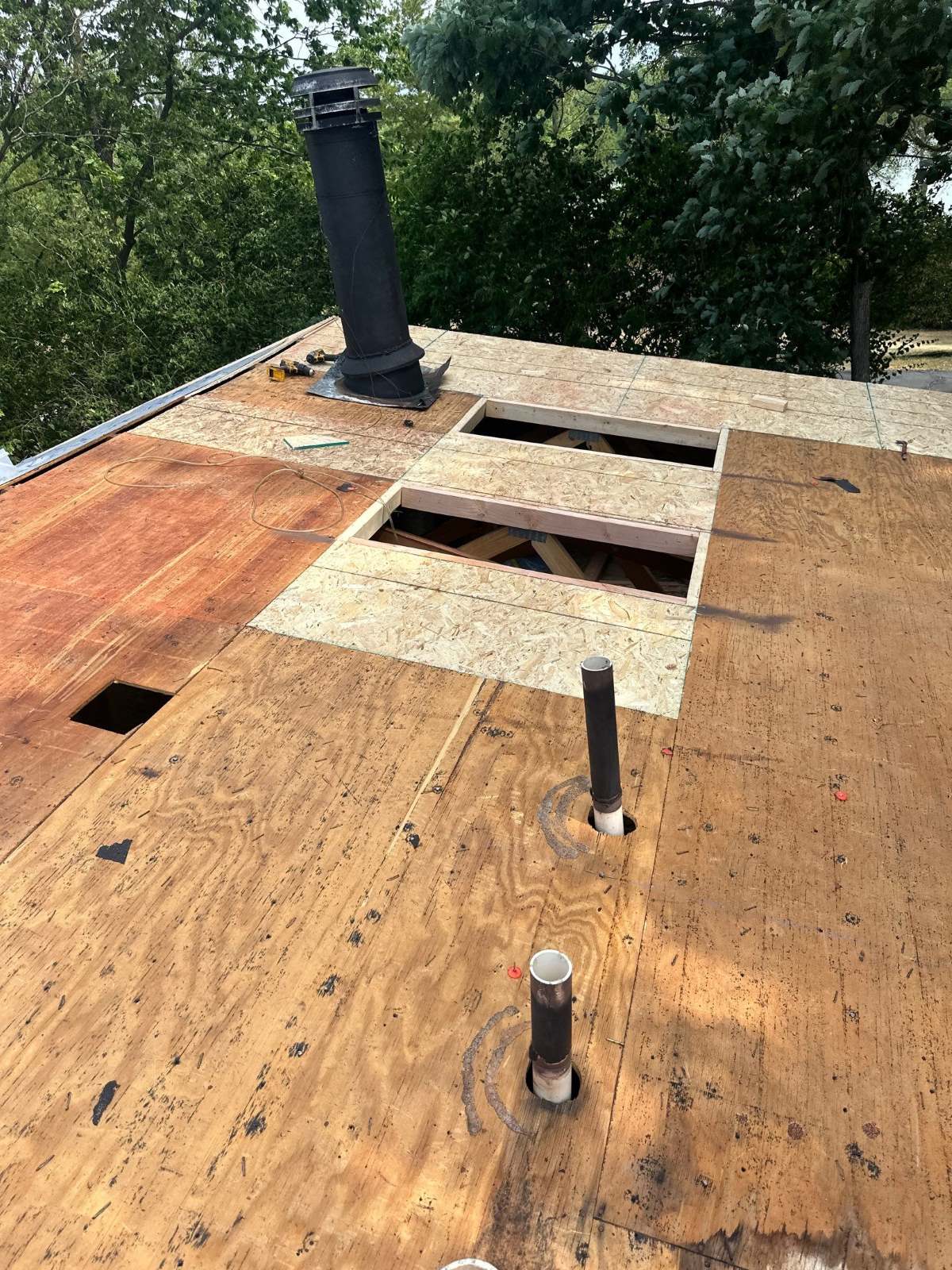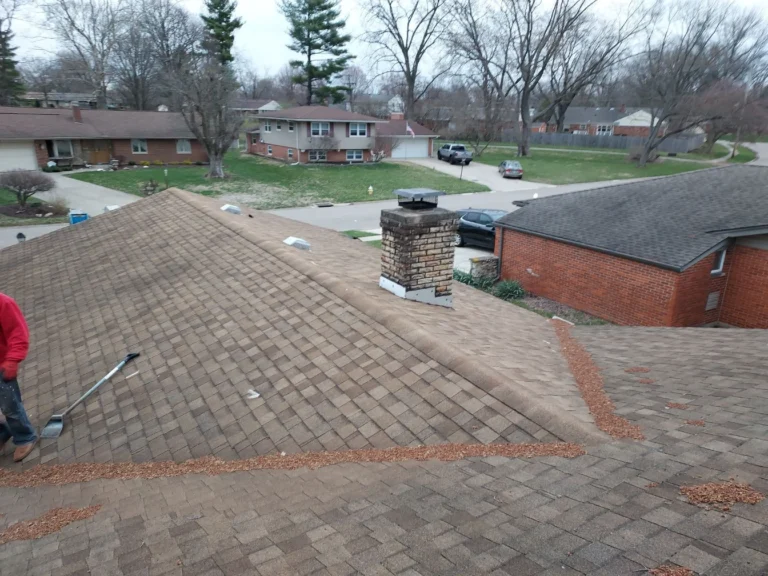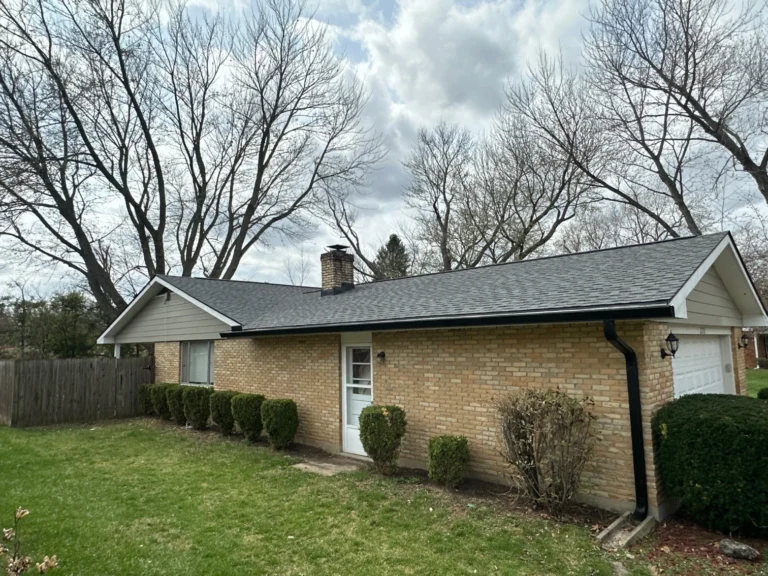Preventing Roof Rot with Proper Attic Airflow
Estimated Read Time:
- 2 minutes

Why Attic Airflow Matters
Roof rot is a costly and frustrating issue for many homeowners, especially in climates like Ohio’s where seasonal humidity and temperature fluctuations put roofs under stress. Proper attic ventilation is one of the most overlooked aspects of home maintenance, yet it plays a crucial role in extending your roof’s lifespan. Without enough airflow, moisture becomes trapped in the attic, leading to mold, mildew, wood rot, and eventually premature roof failure.
Homeowners in Miamisburg and across the state can avoid major repair bills by ensuring their attic ventilation system is designed and maintained correctly. A well-ventilated attic not only prevents roof rot but also improves indoor comfort and reduces energy costs.
The Dangers of Poor Ventilation
When air becomes trapped in your attic, heat and humidity build up quickly. In summer, roof temperatures can soar past 150°F, baking the shingles and weakening roofing materials. In winter, warm air rising from the living space collides with the cold roof deck, creating condensation that soaks into wood and insulation.
This trapped moisture leads to:
- Wood rot that weakens roof decking and rafters.
- Mold and mildew growth that spreads into living areas.
- Damaged insulation that loses effectiveness, raising energy bills.
- Shingle damage caused by overheating and premature deterioration.
The result is a roof that ages faster than it should, with costly consequences for homeowners.
Signs of Roof Rot in Your Home
Recognizing early warning signs of roof rot can save you from major repair expenses. Look for:
- Musty odors coming from the attic.
- Dark streaks or staining on the roof deck.
- Peeling paint or bubbling on ceilings and walls.
- Sagging rooflines or soft spots on shingles.
- Unexplained increases in energy bills.
If you notice these issues, it’s critical to schedule an inspection before the problem spreads further.
How Proper Attic Airflow Prevents Roof Rot
A balanced ventilation system keeps fresh air circulating throughout the attic, flushing out excess heat and humidity. The goal is to create a steady airflow from intake vents (usually soffits) to exhaust vents (such as ridge vents or gable vents). This cycle reduces condensation, protects the roof deck, and ensures the entire system works as intended.
Key benefits of proper airflow include:
- Drying out trapped moisture before it causes damage.
- Regulating attic temperature year-round.
- Reducing strain on air conditioning systems in summer.
- Preventing ice dam formation during winter months.
Types of Attic Ventilation Systems
There are several ventilation options homeowners can consider:
- Ridge Vents – Installed along the roof peak to release hot, moist air.
- Soffit Vents – Placed under eaves to draw in cool air from outside.
- Gable Vents – Located on the gable ends of the attic for cross-ventilation.
- Powered Fans – Mechanical systems that pull hot air out more aggressively.
The best approach often combines intake and exhaust vents for continuous airflow. An experienced roofing contractor can recommend the right balance for your home’s design.
How Much Ventilation Do You Need?
The general rule of thumb is 1 square foot of ventilation for every 300 square feet of attic space. However, factors such as roof pitch, climate, and insulation levels may affect this calculation. Homes in humid areas like Miamisburg may require additional venting to prevent excess moisture.
Maintenance Tips for Healthy Attic Airflow
Proper ventilation isn’t just about installation—it requires ongoing care to stay effective. Here are steps homeowners should take:
- Inspect soffit and ridge vents yearly to ensure they aren’t blocked by debris or insulation.
- Remove any bird nests, leaves, or dirt clogging airflow pathways.
- Keep attic insulation evenly spread and away from intake vents.
- Check for signs of condensation during colder months.
- Schedule professional roof inspections every 1–2 years.
Regular maintenance ensures your system works as intended and keeps roof rot at bay.
When to Call a Professional
If you suspect poor attic airflow or signs of roof rot, don’t wait until the damage spreads. Professional roofing contractors can assess your ventilation system, recommend upgrades, and repair any affected areas before the issue worsens. For homeowners in Miamisburg, CPM ROOF provides expert roofing services backed by years of experience. You can reach the team today at 937-860-2925 for professional advice and inspections.
Protect Your Home with Proper Attic Ventilation
Attic airflow is often out of sight, but it should never be out of mind. Poor ventilation can shorten your roof’s lifespan, damage your home’s structure, and create unhealthy indoor air conditions. By ensuring proper intake and exhaust systems are in place, you’ll safeguard your investment, lower energy costs, and enjoy greater peace of mind.










